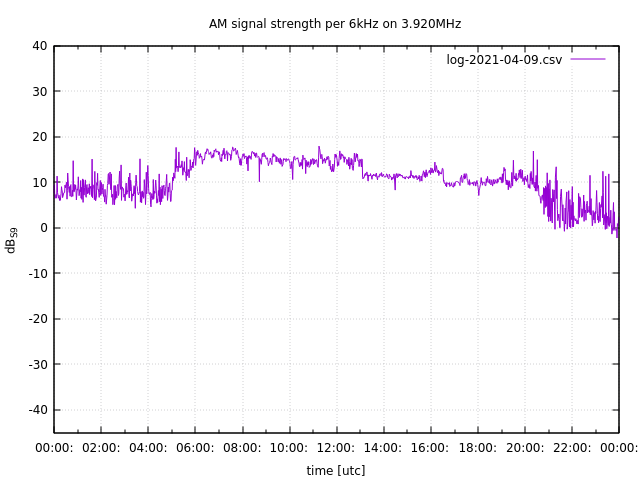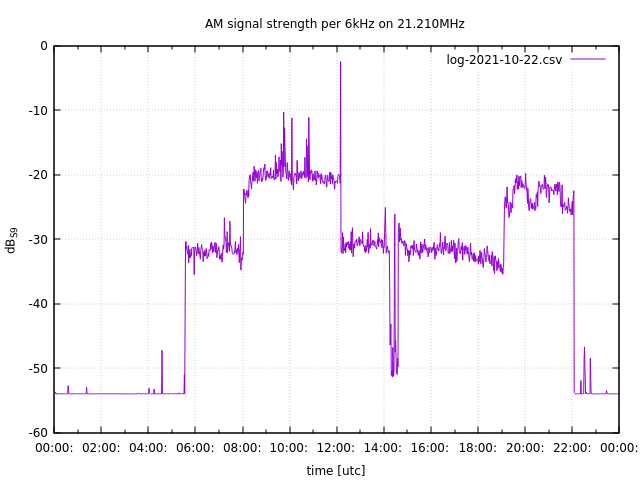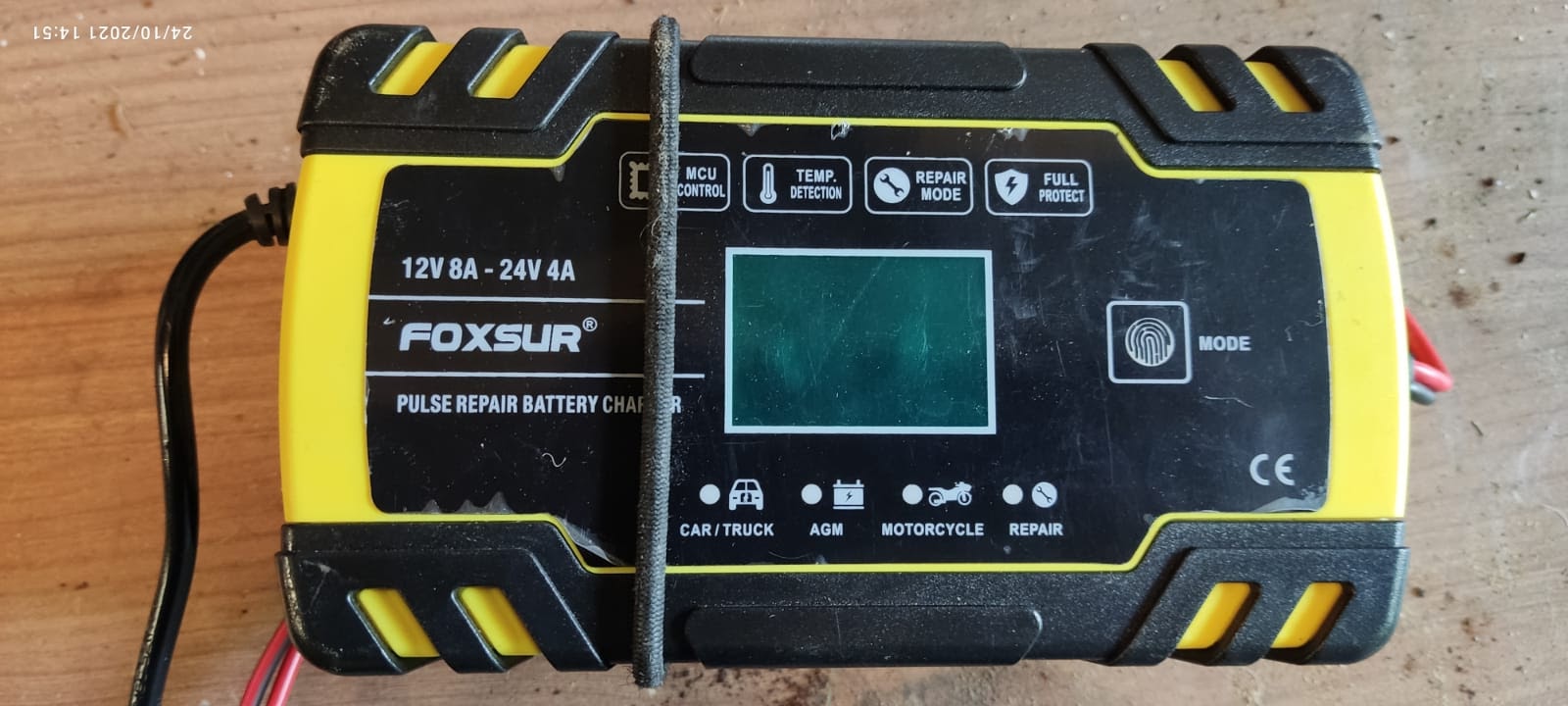This page is basically a blog about the process of investigating 80m noise. Call it a virtual logbook - useful for any possible engagement with OFCOM.
I moved to Lawshall in 2014, but it wasn't so obvious that I had VDSL interference on 80m until I bought an IC-7610 and could see the step in the waterfall display just above 3.7MHz, but it wasn't that bad. However, in 2020, we had a cellphone tower installed about 100m away from the house, and I don't know if it's my imagination, but it seems worse. This isn't my biggest concern though. Sometime in January 2021, a new impulsive type of interference had arrived.
This is a video recording made on 27/02/2021 at 11:41 UTC on a dipole (not inverted-vee, and with a balun) at 12m:
Since it's the daytime, there's little atmospheric noise. You can just about see the VDSL interference up to just above 3.7MHz, but the entire band is now being blatted-out with broadband interference. Notice it doesn't seem to have obvious tone structure, but from the horizontal lines it looks like periodic impulses. When you look at the audio scope on the IC-7610 it does suggest there is 100Hz content, but it's far from pure. The audio also sounds like 100Hz buzz.
On 9/04/2021 (08:45 UTC) I woke up to even more noise! This time it does have some tone structure.
I don't have an SDR, but I can move the IC-7610 waterfall display limits around (you get a maximum of 2MHz span) to see its frequency response.
These videos were taken using the dipole, but I also have a WellGood loop that should be flat with frequency. This caused the peak of the noise to move HF 200kHz or so. I think we're seeing the resonance and Q of the dipole, but the loop result suggests the interference source also has antenna resonance in the band. It's probably unfortunate mains cabling lengths at the source end. What we can say is that it's not totally broadband, and it isn't 'notched', so it probably isn't PLT.
At first I thought this was something else yet again, but later on in the day it reverted to its old self, with its peak at the same frequency. I did get the chance to use my R3500D 80m DF radio (built from a kit) to try and find the source, because when it was going bananas the signal was easier to identify. It's surprisingly difficult to be sure you have the right interference source without a waterfall display. It appears as though the noise is coming from a house across the road - who have a solar PV installation! One thing I did notice was that it was quite sunny in the morning - hmmm.
Something else I've been beavering away at is automatic logging of the S-meter reading from my IC-7610 over time. Since I use Linux in the shack, I'm using hamlib's rigctld, and reading the S-meter using netcat in a shell script. I set the frequency to 3.92MHz, which seems to be generally free of signals, and use AM mode with 6kHz bandwidth. The pre-amp is off, as is the attenuator. In case anyone's interested, the rigctld desktop launcher is here, and the logging script is here. I'm then using a gnuplot script (here) to plot the data. Coincidentally, I had that running during the above event:

Atmospheric noise results in a very noisy result during the hours of darkness when viewed in a 6kHz bandwidth, despite each measurement being the average of 10 measurements with 6s period. The y-axis is dB referred to S9 (50uV), so S0 would be at -54dB, assuming 6dB/S-unit.
Remember that clock time is UTC+1, so whatever it is was switched on about 6am, was dreadful until 2pm when it reverted to its old self, and then turned off just before 9pm.
Through the summer of 2021 I've somewhat let this problem drift, because I've had other things to occupy my time. I've also been getting despondent, having realised that I also have interference on most bands up to 6m. It's mostly noticeable on 15m, typically giving me an S5 noise floor. But here was a particularly bad day:
The peaks are about 70kHz apart. Also, the FFT of the AM modulation demonstrates that the interference has harmonics of 100Hz 'buzz'. When I hold the demodulated waveform you can see that the impulses have 10ms periodicity, i.e. 1/100Hz. This is further evidence that it's some sort of switch-mode power supply. I re-ran my signal strength logging script on 15m, and since there's little atmospheric noise it clearly indicates when it appears.

On the following night, I checked that when the noise disappeared on 15m it also disappeared on 80m. The same is true for the noise seen on 10m and 6m. Whilst unpleasant, this made me optimistic that I would be able to find the source, because higher frequencies would be less influenced by surrounding overhead power and telephone cables.
You can see that there is some resemblance to the earlier strength plot, but the times don't match exactly. The other strange thing is that the interference went off at 22:05 UTC on the night I took the strength log, but I was listening and it went off 10 minutes earlier the following night. That means it's not on a timer - or if it is, it's a very inaccurate one! What on earth is it that someone is switching on at ~6am BST and turning off at ~11pm BST?!
Having been inspired by Ian's (G0CNN) excellent article in Radcom September 2021 on tracking interference, I decided I had to do something similar, and it was now so bad that it was making the hobby virtually impossible. I bought an IC-705, which would allow me to go out portable more easily, and includes a spectrum scope, so I can identify it's the same type of interference. I made a couple of loop antennas; one tuned to 80m and another as per Ian's design, which is more suitable for the higher HF bands.
I identified one house, three doors down on the other side of the road as a possible candidate and posted this explanatory flyer. The chap phoned me that afternoon and I went round to see if I could pinpoint the location. Sadly, I had to admit defeat because there was no clear source. We both agreed it sounded louder one door further along (closer to my house). I thanked him for his cooperation and went home to print off another flyer for the neighbouring house. As I was posting it I took the opportunity to bring the IC-705 to see how loud it was closer to their house. Whilst I was about to leave, they came out to greet me, so I had to explain myself! They were really nice about it and said they were quite interested really. To cut a long story short, we went to his garage, where it was very, very loud and he tried unplugging a few things. He unplugged the float charger to his sports car on the drive and everything went quiet! To check, I took his mobile number and went home to monitor my main radio whilst maintaining phone contact. The interference had gone! We could correlate powering on or off the charger with the interference I could hear. Eureka!
Here's the charger he had:

It's a Foxsur model FBC122408D.
Well, would you believe it, this is the same charger type (but slightly different model) from the September Radcom article. And in fact it was measured by the RSGB EMC committee and reported in April 2021 Radcom. Despite the 'CE' mark, their measurements show it cannot pass the necessary EMC regulations to obtain a CE mark. In fact, there are no suppression components, which is obviously a cost-cutting exercise. The manufacturer is Chinese, and is deliberately misleading the customer. This illustrates the ease with which non-compliant devices can be imported into the UK via routes like eBay. This charger is also currently on sale at Amazon.
I lent my neighbour my own CTEK charger to float-charge his car whilst I sought out a replacement charger that did the 'pulse repair' function. Unfortunately, he disclosed that he had previously lent it to another neighbour, who was so impressed with it he bought his own! Sure enough, later on that day the interference was back, but not quite as loud. I went out that evening to do some DF-ing and it does seem that it's coming from the other neighbour he told me about. This explains a lot; I struggled to find the source because there were two of them!
The charger I bought to replace the Foxsur is the Ring Automotive RSC808 8A 'smart' battery charger. I had already been informed by Ian that he replaced his neighbour's with the Maypole MP7428 8A model, but I thought the Ring Automotive one looked more like the Foxsur and would probably be a more acceptable replacement. I tested the new charger before giving it to my neighbour to verify it was quiet. When I went round to deliver it to him and collect my own charger back I asked if I could have the Foxsur so I could have it tested. "Oh, I've given it to my son, because he lives in Cambridge and I thought it would be far enough away not to be a problem". I explained that amateurs are everywhere, but in the interests of maintaining good relations I didn't push it any further. My apologies to the amateurs of Waterbeach!
On Friday 29th October 2021 I decided to track down the remaining source, which was quite loud again on 15m. Sure enough, I was able to DF it to the house who is a friend of the first neighbour. He already knew about it from the other chap. Again, we went to his garage and there was the Foxsur charging a leisure battery. He turned it off and all was quiet on 15m again. I have yet another charger to order! He agreed to keep it switched off until I returned with the new one.
However, on returning to the shack the noise was still there. Arghhh! The particularly loud noise every ~70kHz had gone, but I was left with a lower level of interference. OK, off again with the DF loop, but this time using the 80m loop which was better able to pick it up. I traced it to yet another neighbour in the same general direction. The chap there was also accommodating and we wandered around his house seeing if there was anything obvious. In the end we resorted to turning switches off at the consumer unit. Bingo, it was on one of the lighting circuits. We then went round the house turning off lights and eventually found the problem; two PAR38 LED lights in the kitchen. "It very gloomy in this part of the kitchen, so we tend to keep them on all day long", he said. This explained why I was seeing it come on at about 6am and go off about 11pm! It also explains why I tended to see less of a problem in the summer, when it would be less gloomy.
Fortunately, he had some spares and I went up a step ladder to replace them for him. I could tell the interference was different in his house, but not eradicated. However, having gone home, my shack radio was now completely free of interference. Hurrah! I reckon one of them had become faulty somehow. In any event, I'm going to source some RFI-quiet replacements myself, test them, and replace even his new ones.
So to summarise, I had THREE noise sources, which made tracking them
down difficult. I also now realise that previous DF-ing exploits were
fooled by re-radiation from other structures: the new cellphone tower,
and even my own tower (both which resonate close to 80m). I hope this
mini-blog lends some encouragement to others in a similar plight.


